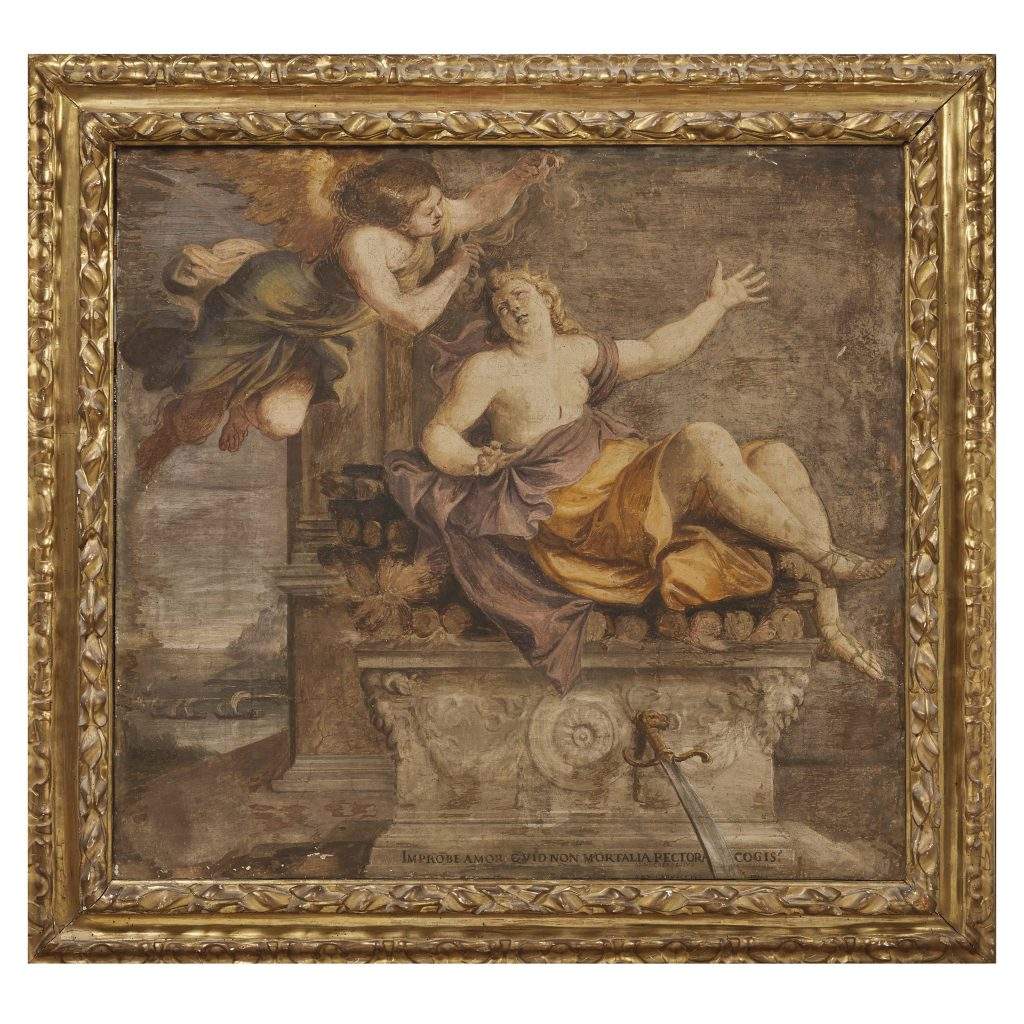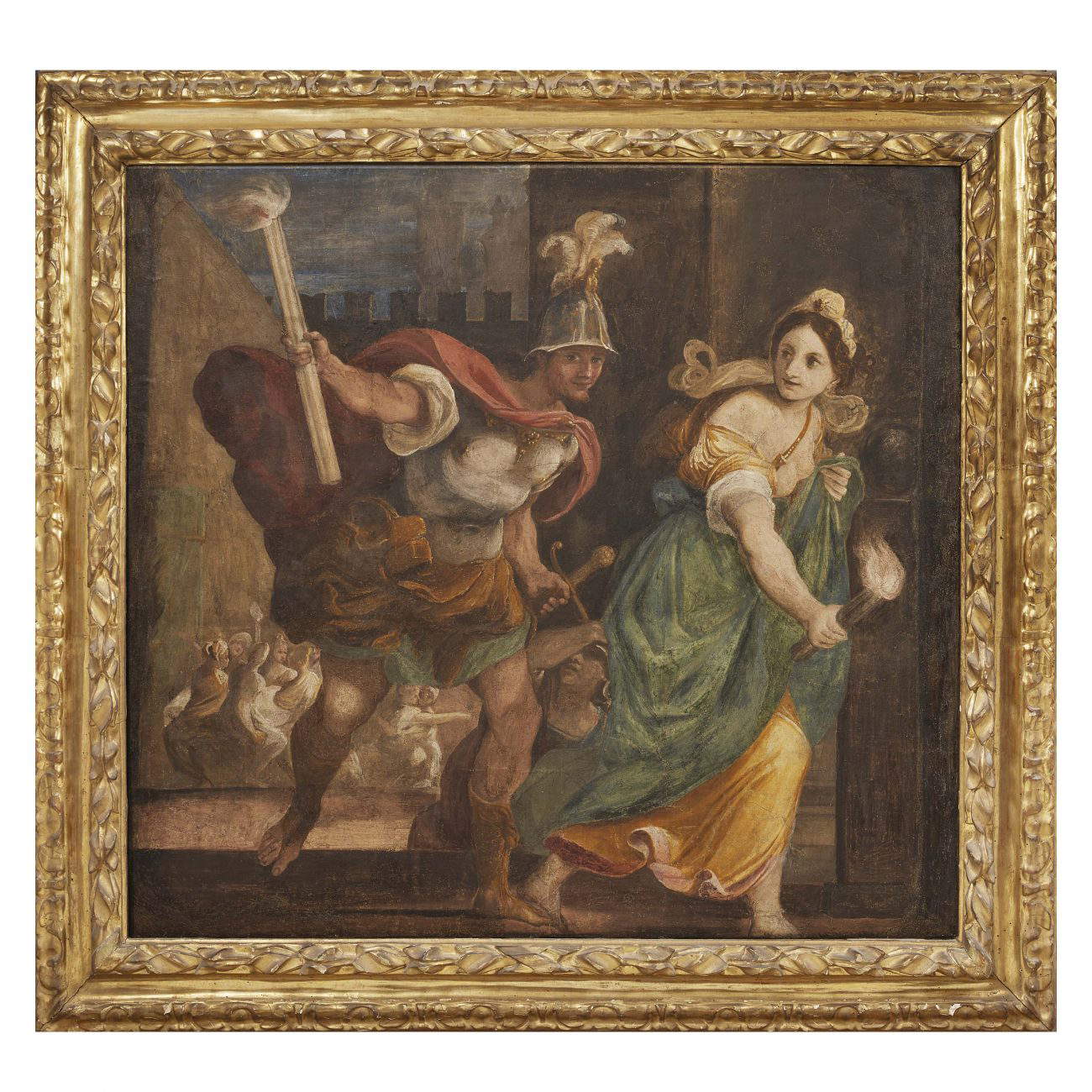Going up for auction at Pandolfini ’s in September are two important paintings, one by Annibale Carracci (Bologna, 1560 - Rome, 1609) and one by his cousin Ludovico Carracci (Bologna, 1555 - 1619): these are two detached frescoes, later transported on framed canvas, that were part of the decorative apparatus of Palazzo Zambeccari in Bologna. At the time of the Carraccis, the palace was owned by the Lucchini family, a dynasty of silk merchants of Genoese origin, who from at least 1511 lived in houses on Piazza de’ Calderini in Bologna, not far from the basilica of San Domenico.
The decoration of the rooms, which is only partially preserved, is mentioned in Felsina pittrice by Carlo Cesare Malvasia, who also mentions the works of the Carracci: “in the two escapes (or fireplaces) of the Signori Angelelli, which was formerly the palagio Lucchini today Zambeccari piazza Calderini, in the first the Queen Dido on the stake over which a love, wrote Hannibal his name, and in the following where a soldier and a female with fiery faces go to set fire to ec., wrote Ludovico his.” The two paintings in fact adorned two fireplaces in the Lucchini palace, and are signed and dated 1592.


The themes, given the intended use of the works, tie in with the theme of fire: that of Hannibal, as explained by Malvasia, depicts the Death of Dido, who is depicted on a pyre under which flames are already burning, while that of Ludovico, with a decidedly rarer theme (and in fact not recognized by Malvasia), depicts theburning of Persepolis at the hands of Alexander and Taid during a Dionysian rite, according to a narrative by Diodorus Siculus. It was allegedly identified in the 18th century by the painter and engraver Carlo Antonio Pisarri, who reproduced it in an engraving, inserting the correct title of the subject (the two paintings were in fact often reproduced in engravings). It is a subject of which very few attestations are known: among the very rare ones is one that dates from 1593 and is by Primaticcio.
After the bankruptcy of the Lucchini family, the palace in 1605 was exchanged with the Angelelli family, which held the property until the end of the 16th century, and then, following the marriage between Isabella Angelelli and Costanzo Zambeccari, it came to the latter family. Later, in 1907, the palace was purchased by Filippo Comi, and it was perhaps after this event that the Carracci frescoes were transported to canvas and moved to rooms other than their original location.
These are two decidedly important works by the Carracci, which remained in their original location for a long time, and were highly praised by critics and art historians. Restored in the early 1990s (they were in fact in a condition described as “ruinous” by Andrea Emiliani in the catalog of the exhibition on Ludovico Carracci held at the Museo Civico Archeologico in Bologna between September and December 1993), the two frescoes constitute one of the most interesting outcomes of Annibale and Ludovico Carracci’s art. Especially in the case of the latter: Emiliani appreciated their “little figures thrown into action with their sweet and youthful faces,” and considered “attractive” the “luminous palette, with Alexander’s rosy mantle, his golden and silvered armor, and Taide dressed in green, pink and gold from which her ebony skin stood out , all set against a shimmering blue sky.”
Given their importance and the fact that the two works have remained linked since the time of their creation, Pandolfini will present them at auction in a single lot in order to avoid their dispersion. The auction house has not yet announced the starting basis, which, however, will be influenced by the fact that the works are included among those of exceptional historical and artistic interest. Will they make it into a public collection?
 |
| Two key works by Annibale and Ludovico Carracci to be auctioned in September |
Warning: the translation into English of the original Italian article was created using automatic tools. We undertake to review all articles, but we do not guarantee the total absence of inaccuracies in the translation due to the program. You can find the original by clicking on the ITA button. If you find any mistake,please contact us.